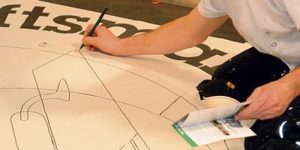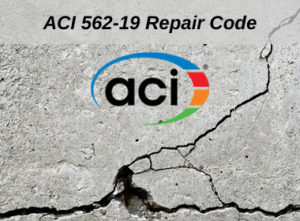
At Colorado Hardscapes, presentations to architects and designers are a crucial component of our marketing plan. Building relationships with the design community and being a resource for them helps us get into projects early. We in turn help architects and landscape architects specify more clearly and understand their options.
A successful presentation requires more than just showing up with lunch and a slide show. A successful presentation requires knowing your audience, offering them value, preparation, passion, focus, visual aids and follow-up.
Know your audience
With any marketing, identifying a target market helps direct your efforts. Once you determine who you want to develop a stronger relationship with, you can start narrowing down what types of presentations you should offer.
A presentation for an architect who specializes in higher education design should be different from a presentation to a heavy/highway general contractor. When presenting to a group of architects within a particular focus, the presentation should be about their specialties and interests. For example, a group of architects who specializes in higher ed may want to know about the design possibilities and limitations of polished concrete. On the contrary, a presentation to a heavy/highway contractor will speak more to construction than the design. Presentations to general contractors tend to be more focused on construction details while presentations to architects focus more on design and possibilities.
Each audience generally has different interests and goals when attending a presentation. Which brings us to my next point.
Offer value
A presentation without value to the audience wastes everyone’s time. Although, some may say a free lunch and an hour-long cat nap is rewarding, let’s not make that a goal of our presentations. Ask yourself why someone should attend your presentation. If you only want your product or services specified more, you’re not quite there yet.
What value does the presentation bring to the architect, owner or general contractor? Your audience may want architectural credit, or perhaps they have a specific problem you can solve, or maybe they are working on a new project and want to know their options. You should never present to a group without knowing what they hope to get out of the presentation so you can better prepare and deliver value. Which brings us to the importance of preparation.
Prepare
Once you have your audience figured out and you’ve determined their goals, you need to make sure your presentation speaks to them and offers a solution to their problem. Each presentation we give is customized to each of our audiences.
For example, we recently presented to a group of landscape architects who focus mostly on park designs and wanted to know about innovations in decorative concrete. We tailored a presentation to them in order to focus more on parks and the new trends we are seeing. Because we also have a history with this landscape architect firm, we made sure to include pictures and examples from projects on which we worked with them in the past. It not only got them engaged, but showed them we listen and value their partnership.
Even if we use a preapproved AIA-accredited presentation, we may shift our focus and time allotment within the preapproved presentation to ensure we focus on what the architects came to learn about.
Preparation means practicing the presentation, knowing your audience and respecting their time. You want to fill up most of the presentation time and allow time for dialogue, but also make sure you do not go over your allotted time. This requires balance and practice. Each typical presentation requires about eight total hours of work. The eight hours usually includes two to three hours of setting up and customizing a slide show (assuming you have a template already set), two to three hours of practice, one hour of organizing visual aids and handouts, one hour of travel and setup (I like to show up a half hour early), one hour for the actual presentation, and another hour of tear-down and follow-up. If you do not have that kind of time to devote to each presentation, I do not recommend presentations as part of your marketing plan.
Be passionate
This should be a given, and it’s easy for most. The decorative concrete industry is one of the most passionate groups of individuals I’ve met. But it’s worth repeating. If there is a topic your audience is requesting that you are not passionate about, either find someone else in your office who is, or direct them to a topic that you are passionate about so you can offer value to them. If you don’t love what you’re presenting, neither will they. Excitement is contagious, but unfortunately, so is mediocrity — and that’s not a message you want to convey.
Stay focused
However, with passion sometimes comes rambling and tangents. Tangents can be healthy if the audience asks questions and drives the conversation in a new direction. To ensure you stay on topic and within your time constraints, do your best to stay focused.
Most of the time, the focus comes from how you prepare the presentation. At Colorado Hardscapes, we offer many services, and to try to present on all of them in one hour would result in a whirlwind of information that just scratches the surface of each. I recommend focusing on one to two topics and diving deeper into each rather than trying to cover everything.
I usually ask the prospective audience what they want us to focus on, or I make a recommendation based on what I know about them or see on their website. Knowing a few people at a design or architecture firm helps, because through them, you can usually discover what drives their firm or their design. For example, if a landscape architect loves to design with template sandblasting images, I will be sure to cover that service — and transition to an alternate way of achieving a similar design intent. When I give a designer one more tool in their design palette, especially one which is similar to something they are already comfortable with, they are more likely to pick it up on the next project.

If your company offers more than you focus on in your presentation, I recommend either opening or closing on a brief overview of your full range of services. If they are interested in any of your company’s other areas of expertise, suggest they reach out to you so you can talk to them further about it, whether it’s at a future presentation, in a meeting, by email or over the phone.
Visual aids
The biggest flaw I see in too many presentations these days is a lack of engagement. This is usually caused by a presenter turning on a slide show and turning off the lights. The presenter goes into autopilot mode (losing some passion) and the audience goes into sleep mode. You can do one of two things with your audience — you can offer pillows to make their nap more comfortable, or you can get them engaged.
At every presentation we give, we bring a suitcase full of samples that reinforce the topics we discuss. For example, if it’s an interior flooring presentation, we bring polished concrete, stained concrete, and samples that emphasize points we make about saw cuts, caulking and other concrete design elements.
Regardless of topic or goals, the samples offer engagement and clarity. As we go through our slide show we pass around samples to encourage interaction and understanding. Talking and photos can only take understanding of some of our finishes to a certain level. Physical samples give the audience something to see and feel. As samples go around the room, often you can almost see the light bulbs go on as the tangibility of the samples sparks new dialogue and interest. Pretty pictures and quality content are important, but they should be supported by some sort of visual aids you can pass around the room.
Follow up
Ideally, some of the samples sparked interest and you leave a couple behind. Or perhaps your audience requested something for their library. Regardless, you should find some point to follow up with.
Many times, a question comes up during the presentation that you can address in follow-up correspondence. For example, “Dear John, thank you for having us present to your group on Monday. During the presentation, you asked a question about the slipperiness of polished concrete. I thought you’d find the attached study interesting and helpful.” Of course, this means you need to pay attention and remember names. Often, I find my listeners will pass out their business cards ahead of time. While I’m presenting, I try to have these in front of me in the same order they are sitting. Then if any question or follow-up issue arises, I will write it on the back of their card for when I’m back at the office. If worse comes to worst and you forgot a name, politely ask for it again.
Presentations help set a specialty concrete contractor apart from being just another subcontractor or supplier. Our industry offers unique value and opportunity to the design community, and it is our job to share those possibilities with them. By presenting to the design community, we help push the bar for excellence in decorative concrete and design. Many landscape architects we address see an idea in one of our presentations and ask if the next great thing is possible. They help push us towards innovation and problem-solving for the future of decorative concrete. This collaboration with the design community will make the industry stronger as a whole, and with a little direction, value, practice, passion, focus and intentional follow-up, we will share a fun and exciting future.















